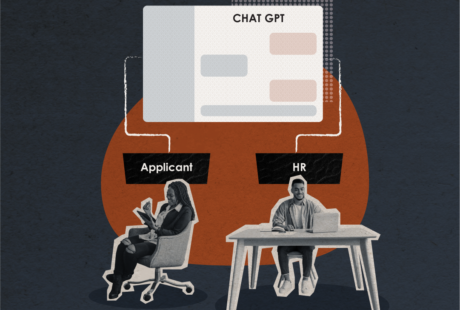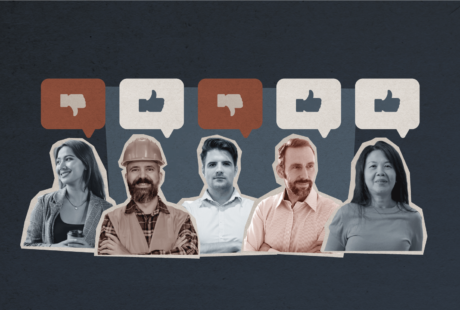Judy Slutsky is Goldbeck Recruiting’s Certified Professional Human Resources consultant. In a recent interview, she shared a wealth of information with us pertaining to the business environment during the early stages of the COVID-19 crisis.
Months into the pandemic, we’re able to see the trail of emotional distress left in COVID-19’s wake. Like a tornado’s path of destruction, COVID-19 has permanently altered the landscapes of our lives. Further, with no end in sight, people are feeling an acute loss of control; they’re unable to plan their lives, as both personal and professional realms have been fundamentally changed by the pandemic.
The result? Grief is becoming a fixture in our workplaces and without proper management and care, it will only worsen the damage inflicted thus far.
What Is Workplace Grief?
Often, when we think of someone grieving, we think of the loss of a friend or relative. In the case of the pandemic, this is all too common.1 But grief is also the manifestation of a more abstract kind of loss, and it’s this sort of grief that I am seeing become common in workplaces across a variety of industries. Employees are struggling to find a light at the end of the tunnel; they feel they have little control over their own lives as some of the very best things in life—vacations, social occasions, eating a nice meal with loved ones at a restaurant—have been inaccessible to us. It is natural and reasonable for employees—and employers!—to feel stress, anxiety, and sadness as they grieve the loss of the “normal” life we’ve known and loved.
I have noticed a meaningful increase in the presence of grief in the workplaces which I interact with. Rather than dealing with the grief of one or two employees, management must recognize that entire teams are now showing signs of mourning and loss, and this looming presence can have measurable negative results.
Identifying Workplace Grief
In employees, group grief of this magnitude manifests in several ways. I have noticed a marked withdrawal in employees across a variety of sectors. In my experience with the federal government, fulfillment and packaging, professional services, and private retail, I noticed that employees are withdrawing in similar ways: namely, as a lack of employee engagement.
Engagement indicates the health and productivity of a workforce. Good engagement, measured by the actions an employee might take within the workforce such as offering feedback in meetings, collaborating with colleagues, or taking a proactive stance on workplace initiatives, reflects an invested, loyal employee. This is why it is so concerning to see grief-induced withdrawal undermine that engagement.2
Naturally, withdrawal and lack of engagement is exacerbated by sub-par work-from-home setups. For people trying to put in a full day’s work while minding their children or caring for elderly relatives, managing 8 hours at a computer may be truly impossible. Further, without their colleagues to lean on, employees may feel increasingly isolated and therefore less engaged with their projects and workplace goals and measurables. All this to say that if your workforce is remote and you are identifying signs of widespread employee grief, it is imperative to find ways to demonstrate your empathy so as to preserve and encourage vestiges of that potentially waning engagement.
What Can Businesses Do to Support Employees Through Grief?
So far, I have seen many companies implement Employee Assistance Programs (EAPs) and begin circulating resources on managing grief. However, these good faith gestures put the cart before the horse. The real first step is crucial and urgent: companies must establish and demonstrate empathy in the workplace. First and foremost, you must acknowledge and accept your employees’ grief.3
HR should not be the only department handling this task—management, even C-Suite leadership needs to sit down with employees and acknowledge the challenges and difficulties that they and their families are facing.
This is a challenge for many companies on two levels. First, human resources is often the only department involved in managing the expectations and happiness of employees. This makes sense: generally, HR professionals come from backgrounds in organizational and behavioural psychologies. Ultimately, that is what workplace grief is: the manifestation of a psychological affliction which, if not managed, can become pathological. However, it is imperative that employees see management and leadership expressing, and acting on, the same empathetic values. Second, management, leadership, and human resources may not have the terms or tools to feel equipped to address and manage workplace grief. This is the reality we’re facing: in these unprecedented times, there is little for us to fall back on.
However, maintaining an empathetic approach to managing employee expectations and needs—followed by the implementation of EAPs and the like—is a necessary first step that will lay the groundwork for more collaboration as a team to recover safely from workplace grief. This empathetic approach should manifest as employee-specific, purpose-built solutions, such as allowing offset work hours or granting leave in the afternoon for school pickups.4 This is a very difficult period for everyone, but the easiest way to keep engagement—and by extension, performance—high is to demonstrate management’s care and understanding for the workforce, no matter the challenges that lay ahead.




